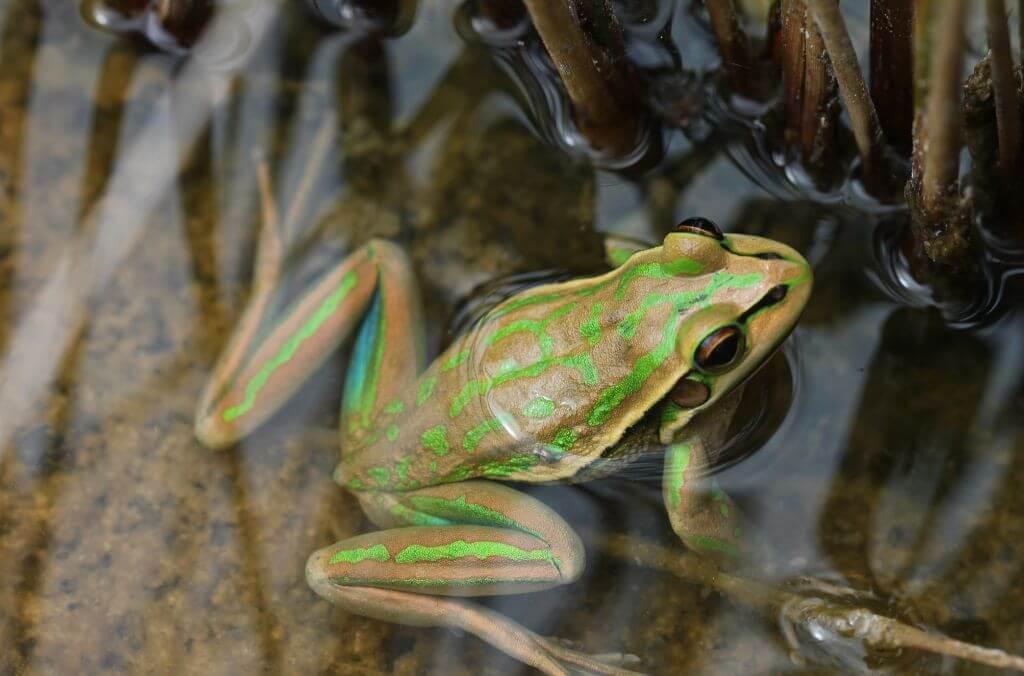A tonne of tadpoles
Well, maybe not a tonne, but hundreds of endangered Green and Golden Bell Frog tadpoles are growing in select ponds at Sydney Olympic Park!
As February 2 is World Wetlands Day, it is an appropriate time to think about our wetland friends. A warm summer has aided the Park’s frog population, with hotter temperatures and isolated storms encouraging adults to actively mingle and the growth of tadpoles to hasten. The recent large rain event on 14-16 January may have encouraged even more Green and Golden Bell Frogs to breed.
When do adults actively mingle?
As amphibians are ectotherms with highly water-permeable skin, environmental temperature and moisture directly affect their body temperature and hydration. If they are warm and hydrated, they are more active!
When conditions are right, male Green and Golden Bell Frogs tend to call in groups from larger and more permanent waterbodies, advertising to the surrounding females. Multiple male Green and Golden Bell Frogs have recently been heard calling in chorus in the Park.
Listen:
Females tend to be found in more ephemeral ponds, beyond permanent waterbodies. And although it is not known how exactly she determines, she will travel to and select a calling male. She will then lay her eggs, he will fertilise them, and tadpoles hatch 2-5 days later.
Why do tadpoles prefer warmer temperatures?
Starting life out as a tadpole can be scary – no claws, no pincers, permeable skin and a sought-after snack of birds, reptiles, and even other frogs! The quicker one grows and metamorphoses into a frog, the better the chance of survival.
The optimal growth rate of a tadpole depends on a particular temperature range for that species, with the growth of Green and Golden Bell Frog tadpoles hindered below 18oC. Warmer water also encourages more tadpole food – algae.
Green and Golden Bell Frog tadpoles have been growing in select ponds since late last year and are making great progress!
How do we help protect these growing tadpoles?
Frog ponds in the Park are regularly monitored, and when endangered Green and Golden Bell Frog tadpoles are detected, active management comes into play.
Temporary netting of breeding ponds helps to protect these endangered tadpoles from predation of large waterbirds, that could otherwise gobble hundreds of tadpoles up in one feeding. Recycled water can also be utilised to top up ephemeral ponds over periods of low rainfall.
These little taddies inspire hope for the continued existence of the remarkable Green and Golden Bell Frog and we will keep a close eye on them.

The permanent and ephemeral waterbodies wetlands provide are essential for healthy frog populations. 
Endangered Green and Golden Bell Frog tadpoles have benefited from a warm summer at the Park. 
We continue to actively manage in wetlands of the Park to protect this endangered species.